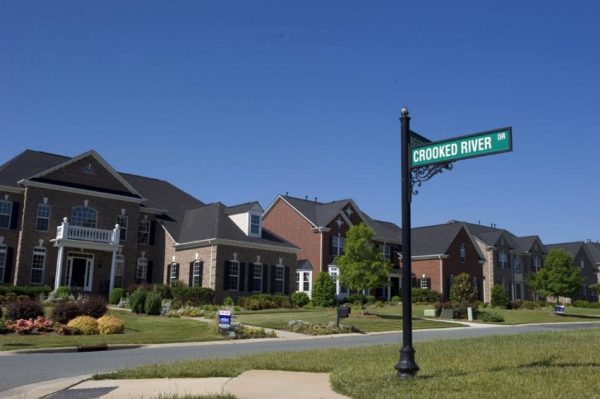Show up to connect our future

If you’ve been paying any attention to national politics in recent weeks, you’ve surely heard remarks like:
- Why don’t politicians listen to the people?
- How can we get through to them?
- Why can’t government get anything done?
But when people say “the government,” what government do they mean? It’s likely they’re thinking of the sclerotic workings of Congress.
|
Attend the meeting The last of four CONNECT workshops in Mecklenburg County will be 5:30-7:30 p.m. Thursday, Oct. 24, at the Mahlon Adams Pavilion at Freedom Park. Registration is requested but not required. Visit connectourfuture.org to register. |
Local governments, though, don’t have the luxury of tying themselves in knots for very long. The water and sewer pipes have to work. Police, medic and fire departments must stay open, and garbage can go uncollected for only so long before voter rebellion erupts. Further, in most U.S. cities and counties the budget is required to balance. That forces difficult choices – raise taxes or cut services? – to be made, year after year after year.
Should the city stop rake-to-the-curb leaf pickup? Do we have enough social workers? Are sidewalks more important, or traffic lights? And while you may think some local decisions are flat wrong, at least decisions are made, and government functions.
Today, with Congress at a standstill, it’s in U.S. cities and metropolitan areas where leaders still work together to solve problems, as Bruce Katz and Jennifer Bradley of the Brookings Institution have written in Metropolitan Revolution. “Cities and metropolitan areas are becoming the leaders in the nation: experimenting, taking risk, making hard choices, and asking forgiveness, not permission,” Katz and Bradley write.
Or, putting it more bluntly, they write: “Cities and metropolitan areas are on their own. The cavalry is not coming. … To borrow from Pogo, metro leaders have met the solution, and it is them.”
All of that is one reason ICMA, the International City/County Management Association, has declared this “the decade of local government.”
And it’s an important reason for residents of Charlotte and Mecklenburg County to pay more attention locally. As it happens, this week that thought is particularly significant. Thursday is the last chance for members of the public here to add their voices to a series of workshops that are part of a Charlotte-region-wide effort to chart a future for ourselves.
Think about it: the U.S. Census found that from 2000 to 2010 the Charlotte metro area grew faster than any other large metro region. In next 40 years the 14-county Charlotte region population is expected to double – adding 1.8 million people and 860,000 jobs by 2050. Where will all those people live? Will they all own three cars per household, and make 12 auto trips a day? Will newcomers bring new streets with them when they arrive? How can we grow without bankrupting local coffers, and still keep the quality of life that makes the Piedmont such a popular place?
The 14-county planning effort underway is called CONNECT Our Future, or connectourfuture.org, and is funded with a $5 million grant from the U.S. Department of Housing and Urban Development. It’s a data-driven approach, encouraging everyone to help decide what the future of the metropolitan region should be. So the more people involved, the stronger the plan will be.
The last of four Mecklenburg County public workshops where residents will work, together, on planning the best future, will be 5:30-7:30 p.m. Thursday at the Mahlon Adams Pavilion at Freedom Park. The other three Mecklenburg sessions in the past month drew several dozen people each. I know Charlotteans can do better.
Will showing up truly affect public policy and elected officials? Who knows? All I know is that not showing up will conclusively NOT affect anything. And I do know one more thing. It’s about the woman the Freedom Park building is named for.
Mahlon Adams, who died last year, understood the need to show up, over and over, and to be heard even if some people didn’t want to hear. She began as what many developers and city planners would call a NIMBY, as in Not In My Back Yard. (She wanted the city to follow its adopted plans. Imagine!) She kept attending meetings and talking to (or maybe badgering) elected officials until she eventually won appointment to the Charlotte-Mecklenburg Planning Commission. She even had to switch her registration from Democratic to Republican to be appointed. So she did. She knew party was less important than impact. Do they know that in D.C.?
And this is certain: If Mahlon were still alive, I know where she’d be on Thursday night.
Mary Newsom is associate director of the UNC Charlotte Urban Institute. This article represents the writer’s opinions, not necessarily those of the UNC Charlotte Urban Institute or the University of North Carolina at Charlotte.
Disclosure: The institute has a contract with the CONNECT project to develop a set of regional metrics to track progress over time and to house those metrics on a page on the institute’s Regional Indicators website. Institute Director Jeff Michael and the institute’s researchers working with CONNECT had no role in writing or editing this article.